Here are some questions and answers about steel pipe products that customers often encounter. If you don't find the corresponding reply, you can directly contact our customer consultant , We well reply to you as soon as received your request.
About product
Q1Can I have a trial order only for several tons carbon steel pipe?
Ans
We can ship the regular specifications to you with LCL service.
Q2Which-kind-Surface-coating-for-carbon-steel-pipe?
Ans
Anti-rusted oil painting,
varnish painting,
ral3000 painted,
galvanized,
3LPE,
3PP
Q3Which-steel-grade-can-YuanTaiDeRun-provide?
Ans
Q195 = S195 / A53 Grade AQ235 = S235 / A53 Grade B / A500 Grade A / STK400 / SS400 / ST42.2Q345 = S355JR / A500 Grade B Grade CQ235 Al killed = EN39 S235GTL245 = Api 5L / ASTM A106 Grade B
Q4How to Protect Black Pipe ?
Ans
Black pipe is plain steel pipe without any protective coatings. Black pipe is used for a variety of applications around the home. It is very common to see black pipe used for your natural gas line and sprinkler system lines. Since black pipe has no protective coating, it may rust easily in wet or humid environments. To stop the pipe from rusting or corroding on the outside, you should provide a layer of protection on the outside of the pipe. The easiest method is painting it.
Q5YuanTaiDeRun is a gold supplier and do trade assurance or not?
Ans
YES. We have strong cooperation with SINOSURE
Q6What does RHS mean ?
Ans
RHS stands for Rectangular Hollow Section, that is rectangular steel pipe.We also have square hollow section steel pipe, according to standard: ASTM A500 , EN10219 , JIS G3466 , GB/T6728 cold formed square and rectangular steel pipe.
Q7Available steel products from Tianjin YUANTAIDERUN?
Ans
ERW steel pipe, SSAW steel pipe, LSAW steel pipe, galvanized steel pipe, stainless steel pipe, casing and tubing pipe, elbow,reducer,tee,cap,coupling, flange,weldolet, Seamless steel pipe
Q8What is YUANTAIDERUN terms of payment?
Ans
TT, L/C(For big order,30-90 days can be acceptable).
Q9Why Does Steel PIPE Rust?
Ans
Steel will be oxidized and rusted
Q10What shipping method YUANTAIDERUN use?
Ans
1. OD 219mm and below In hexagonal seaworthy bundles packed by steel strips, With two nylon slings for each bundles2. above OD 219mm in bulk or according to custom opinion3. 25 tons/container and 5 tons/size for a trial order;4. For 20" container the max length is 5.8m;5. For 40" container the max length is 11.8m.
Q11DO YOU HAVE YOUR OWN BRAND NAME?
Ans
YES WE HAVE YUANTAIDERUN Brand TOP 500 China
Q12what is alloy steel?
Ans
An iron-based mixture is considered to be an alloy steel when manganese is greater than 1.65%, silicon over 0.5%, copper above 0.6%, or other minimum quantities of alloying elements such as chromium, nickel, molybdenum, or tungsten are present. An enormous variety of distinct properties can be created for the steel by substituting these elements in the recipe.
Q13what is Argon-Oxygen Decarburization?
Ans
A process for further refinement of stainless steel through reduction of carbon contentThe amount of carbon in stainless steel must be lower than that in carbon steel or lower alloy steel (i.e., steel with alloying element content below 5%). While electric arc furnaces (EAF) are the conventional means of melting and refining stainless steel, AOD is an economical supplement, as operating time is shorter and temperatures are lower than in EAF steelmaking. In addition, using AOD for refining stainless steel increases the availability of the EAF for melting purposes.Molten, unrefined steel is transferred from the EAF into a separate vessel. A mixture of argon and oxygen is blown from the bottom of the vessel through the melted steel. Cleaning agents are added to the vessel along with these gases to eliminate impurities, while the oxygen combines with carbon in the unrefined steel to reduce the carbon level. The presence of argon enhances the affinity of carbon for oxygen and thus facilitates the removal of carbon.
Q14what is the corrosion of structural steel?
Ans
The corrosion of structural steel is an electrochemical process that requires the simultaneous presence of moisture and oxygen. In the absence of either, corrosion does not occur. Essentially, the iron in the steel is oxidised to produce rust, which occupies approximately 6 times the volume of the original material consumed in the process. The general corrosion process is illustrated here.As well as general corrosion, there are various types of localised corrosion that can also occur; bimetallic corrosion, pitting corrosion and crevice corrosion. However, these tend not to be significant for structural steelwork.The rate at which the corrosion process progresses depends on a number of factors relating to the ‘micro-climate’ immediately surrounding the structure, principally the time of wetness and the atmospheric pollution level. Because of variations in atmospheric environments, corrosion rate data cannot be generalised. However, environments can be broadly classified, and corresponding measured steel corrosion rates provide a useful indication of likely corrosion rates. More information can be found in BS EN ISO 12944-2 and BS EN ISO 9223
Q15What is RHS and SHS?
Ans
Painted SHS (square hollow sections) and RHS (rectangular hollow sections) are high-strength cold-formed hollow steel sections that are primer painted for protection during storage and handling.
Q16Can you hot-dip galvanized steel?
Ans
Image result for Hot dip galvanized square steel pipeIn long-term, continuous exposure, the recommended maximum temperature for hot-dip galvanized steel is 200 °C (392 °F), according to the American Galvanizers Association. The use of galvanized steel at temperatures above this will result in peeling of the zinc at the inter metallic layer.
Q17What is the minimum order quantity of yuantaiderun?
Ans
2-5 Tons
Q18Can yuantaiderun do OEM, ODM and OBM?
Ans
Yes,we can
Q19What are the spot steel pipes of yuantaiderun, and how many tons are they?
Ans
Yuantai has a standing stock of more than 200000 tons, and the annual shipment specification is: 20*20*1.0—1000*1000*50mm, 20*30*1.0—800*1200*50mm, Φ 219— Φ 1420mm,The black, hot-dip galvanized rectangular pipe and spiral welded pipe made of q195-q460 have an existing capacity of nearly 5 million tons,After the completion of the new base in Tangshan, the total production capacity will reach 10 million tons.
Q20What is the largest annual output of steel pipe of yuantaiderun?
Ans
The black, hot-dip galvanized rectangular pipe and spiral welded pipe made of q195-q460 have an existing capacity of nearly 5 million tons,After the completion of the new base in Tangshan, the total production capacity will reach 10 million tons.
Q21What are the maximum and minimum specifications of square and rectangular steel pipes of yuantaiderun?
Ans
OD Square steel pipe:10*10-1000*1000mm OD rectangular steel pipe:10*15-800*1100mmThickness square rectangular steel pipe:0.5-60mm
Q22What certificates and qualifications does yuantaiderun steel pipe have?
Ans
Certification: CE,LEED,BV,PHD&EPD,BC1,EN10210,EN10219,ISO9000,ASTMA500,ASTMA501,AS1163,JIs G3466
Here are some questions and answers about delivery that customers often encounter. If you don't find the corresponding reply, you can directly contact our customer consultant , We well reply to you as soon as received your request.
About Delivery
Q1How long is your delivery time for natural black carbon steel pipe?
Ans
Generally it is 3-5 days if goods are in stock. or around 25 days if the goods are not in stock and it is according to order requirement.
Here are some questions and answers about service that customers often encounter. If you don't find the corresponding reply, you can directly contact our customer consultant , We well reply to you as soon as received your request.
About Service
Q1Why most people choose YUANTAIDERUN?
Ans
YUANTAIDERUN GOOD QUALITY GOOD PRICE GOOD SERVCE.
Q2How about quality control in YUANTAIDERUN factory?
Ans
We have a professional laboratory,And professional testing personnel.
Q3Do you have aftermarket service?
Ans
Quality/Quantity Claims: The Buyer is entitled to make both quality and quantity claim in writing against the Seller within 90 days after arrival at the port of destination.
Q4Which Certificate YuanTaiDeRun Can Provide?
Ans
EN210 EN219 BC1 API UL ISO FPC CE EPD PHD JIS3466 GB
Q5How do you make our business long-term and good relationship ?
Ans
1.We keep good quality and competitive price to ensure our customers' benefit.2.We respect every customer as our friend and we sincerrly do business and make friends with them, no matter where they come from.
Q66. Can we get the some samples?Any charges?
Ans
Yes,you can get available samples in our stock.Free for real samples,but customers need to pay the freight cost.
Q7How steel is used in buildings and infrastructure?
Ans
The possibilities for using steel in buildings and infrastructure are limitless. The most common applications are listed below.For buildingsStructural sections: these provide a strong, stiff frame for the building and make up 25% of the steel use in buildings.Reinforcing bars: these add tensile strength and stiffness to concrete and make up 44% of steel use in buildings. Steel is used because it binds well to concrete, has a similar thermal expansion coefficient and is strong and relatively cost-effective. Reinforced concrete is also used to provide deep foundations and basements and is currently the world’s primary building material.Sheet products: 31% is in sheet products such as roofing, purlins, internal walls, ceilings, cladding, and insulating panels for exterior walls.Non-structural steel: steel is also found in many non-structural applications in buildings, such as heating and cooling equipment and interior ducting.Internal fixtures and fittings such as rails, shelving and stairs are also made of steel. For infrastructureTransport networks: steel is required for bridges, tunnels, rail track and in constructing buildings such as fueling stations, train stations, ports and airports. About 60% of steel use in this application is as rebar and the rest is sections, plates and rail track.Utilities (fuel, water, power): over 50% of the steel used for this application is in underground pipelines to distribute water to and from housing, and to distribute gas. The rest is mainly rebar for power stations and pumping houses.
Here are some questions and answers about making process of steel pipe that customers often encounter. If you don't find the corresponding reply, you can directly contact our customer consultant , We well reply to you as soon as received your request.
About making process of steel pipe
Q1How to produce Hot Dipped Galvanized steel pipe?
Ans
Galvanized steel pipe has the following production steps:Black parts inspection → hanging → degreasing → rinsing → pickling → cleaning → dipping plating aid → hot air drying → hot dip galvanizing → cooling → passivation and rinsing → unloading → inspection and finishing → packaging, warehousing and transportation.
Q2How to produce Electrical Resistance Weld Pipe-ERW?
Ans
High frequency welded steel pipe is that the steel strip is sent into the forming machine and becomes a cylindrical tube blank. Through the induction ring or contact welding corner, the magnetic field near the induction ring generates induced current through the edge of the steel strip. The edge of the steel strip is heated due to the resistance heat generated by its own resistance, and the heated edge of the steel strip is extruded into a weld by the extrusion roller. High frequency welding does not add metal, but is actually a forging welding.The so-called high frequency is relative to the AC current frequency of 50Hz, which generally refers to the high-frequency current of 50KHz ~ 400kHz. When high-frequency current passes through metal conductors, it will produce two strange effects: skin effect and proximity effect. High frequency welding uses these two effects to weld steel pipes.
- Tel:
86-22-58951962
- Email:
- sales@ytdrgg.com
- WhatsApp:
- https://wa.me/8613682051821
- Address:
- No. 1, Hengtong Road, Daqiuzhuang Town, Jinghai District, Tianjin
- Email:
- sales@ytdrgg.com
- square&rectangular steel tube
- ERW steel pipe
- Ship Building Steel Pipe
- LSAW steel pipe
- seamless steel pipe
- galvanized steel pipe
- spiral steel pipe
- special shaped steel pipe
- line pipe&OCTG pipe
- stainless steel tube/coil
- Steel coil / steel strip / steel plate / angle steel / channel steel / H-section steel/steel spiral ground pile


